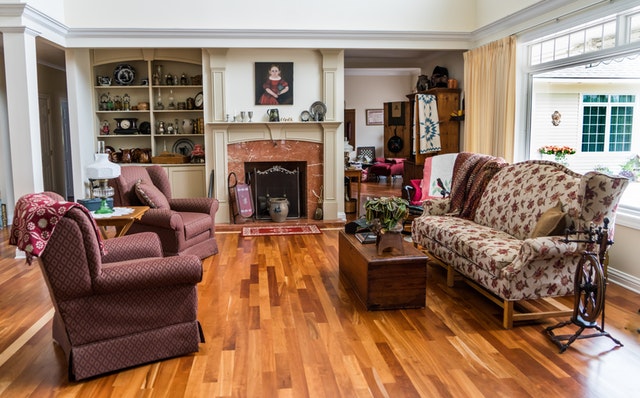
When heating and cooling your home, air conditioners and furnaces are not your only options. Ductless heat pumps, or mini-split-systems, offer similar benefits without the space-consuming equipment found in central HVAC systems. If you have an older home without a traditional HVAC unit or are looking to upgrade your current system, ductless heat pumps might be the perfect solution for your comfort needs.
If you are considering a ductless system, download this checklist to weigh the pros and cons of ductless vs. central air.
What is a Mini-Split System? 
Ductless HVAC systems combine mini-split technologies with a heat pump. They deliver cool air during the dog days of summer. In the winter, they absorb heat from the outdoor air and move it inside to make homes feel cozy.
Ductless mini-slips have two main components: an outdoor condenser and indoor air handlers, which professionals install on walls or ceilings. Depending on your needs, you may have more than one air handler in your home.
The system works by circulating refrigerant through a small conduit, or tubing, that connects the outdoor unit to the indoor air handlers. The conduit contains a condensate drain, refrigerant line, and power cable. Unlike traditional HVAC systems, ductless heat pumps do not require ductwork. This means that if your home does not already have a ductwork system, as is the case with some older homes, you will not be forced to remodel or sacrifice storage space to make room for ducts.
During the installation of a mini-split system, a specialist mounts the indoor units, or air handlers, in the rooms you wish to heat and cool. They will then drill small holes in the walls of the respective rooms for the conduit so that it remains hidden.
Are Ductless HVAC Systems Right for You?
Ductless heat pumps might serve your heating and cooling needs well if:
- You have an older home that does not have a central HVAC system or ductwork installed
- You want to heat and cool an area of the home that’s not connected to the central HVAC system, such as a garage or an addition
- You want to upgrade or replace your HVAC system with equipment that doesn’t use ductwork
- You want to heat or cool individual rooms or space in your home
- You live in a region without wide temperature swings or extremely cold winters
- Someone in your home suffers from allergies
Advantages of Ductless Heat Pumps
- Save energy by only heating or cooling the occupied spaces in your home; no more heating empty rooms
- You’ll experience fewer energy losses because conditioned air will not escape through ducts
- The systems may be quieter than central air conditioners
- Installation is simpler and faster than traditional HVAC systems
- The systems work well in homes that have ductwork
- The units are great for supplementing or replacing central HVAC systems, electric baseboard units, stoves, space heaters and other comfort systems
- Mini-splits maintain constant temperatures because they don’t cycle off and on
- The systems, particularly those with variable-speed air handlers, tend to be the most energy efficient on the market
- Installing multiple air handlers allows you to create different “zones” in your home that allow individuals to set their preferred temperatures
- Federal and state incentives may be available to help offset the cost of a new system
- You don’t have to worry about cleaning ducts, which trap dust, pollen, dander, mites and other allergens
- Many units come with warranties that help protect your investment
- Some units have features such as dehumidification functions, reusable filters, remote controls and programmable timers
Mini-Split System Considerations
Types
- Single-zone: Best for individual rooms or to supplement an existing HVAC system
- Multi-zone: Great for small and medium-sized houses, a multi-zone system allows you to control the temperature in two or more zones
- Whole-house system: Perfect for large homes, a whole-house system allows you to control up to eight or more zones individually, depending on the model
Sizes
Like other types of HVAC equipment, it’s vital to ensure a ductless mini-split is the right size for the spaces you want to heat and cool to prevent discomfort and energy losses. Specialists calculate the appropriate size of equipment in BTUs and cooling capacity (in tons) based on the size of the space you want to heat and cool. For example, a 150-square-foot room might need a ductless mini-split that is 5,000 BTUs. A 500-square-foot room may need a unit that is 11,000 BTUs. When summer temperatures frequently soar above 90°F, a specialist may recommend a ductless heat pump with a greater number of BTUs to prevent over-working the system. A licensed HVAC professional will identify the unit best for your needs.
The best way to determine if a mini-split system is a good option for your home and comfort needs is by scheduling a free consultation with a specialist from AAA Heating and Cooling. A professional will consider your needs and budget, review the options available, and inform you of the rebates and incentives available. Schedule your consultation today.
What do you think of ductless mini-split systems? Don’t forget to download this checklist to weigh the pros and cons of ductless vs. central air.